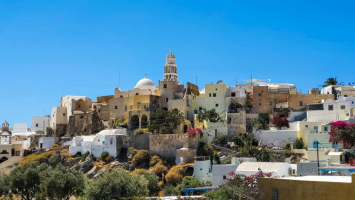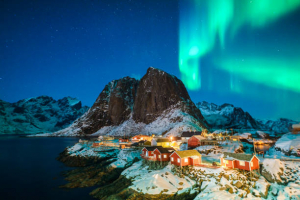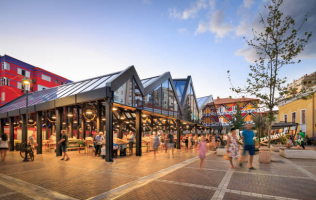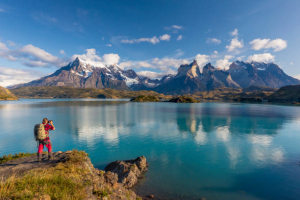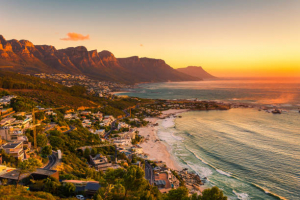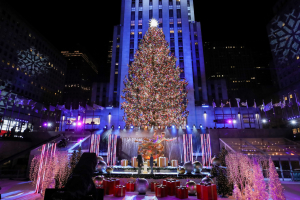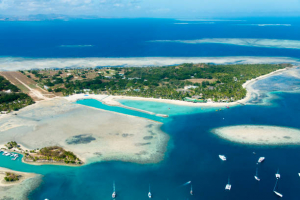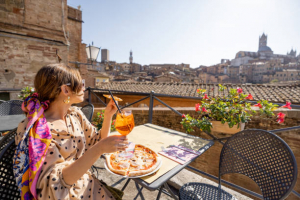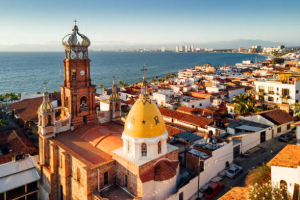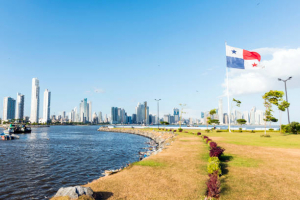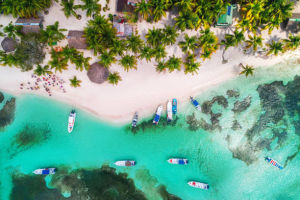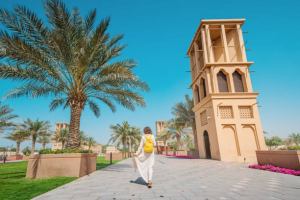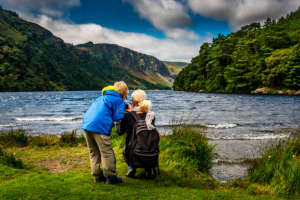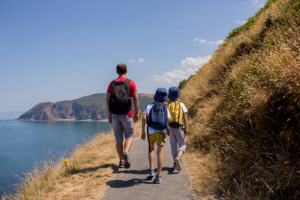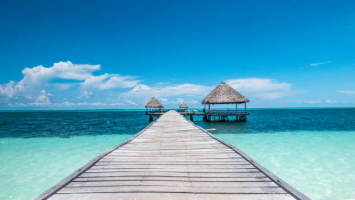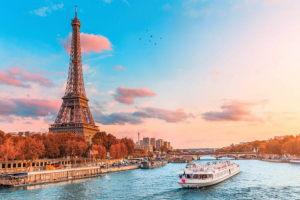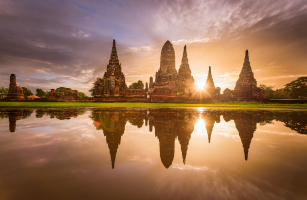Top 10 Things To Do In Mauritius
One of the most stunning islands in the world, Mauritius is the kind of multifaceted vacation spot that is ideal for both families and honeymooning couples, as ... read more...well as just about everyone in between. In this post, Toplist will share some things to do in Mauritius. Don't skip it!
-
Dive in the West Coast is the first thing to do in Mauritius. Mauritius is encircled by a magnificent lagoon, and its shallow waters are themselves incredibly lovely. The lagoon's reefs also provide fantastic diving opportunities. The west coast of Mauritius features a drop-off where the lagoon meets the open ocean and waves that break near the horizon. This area is home to an incredible variety of marine life. Many of the best dives, notably La Cathédrale, where you may observe scuttling lobsters, leave from Flic en Flac.
The longest and busiest beach on the West Coast is Flic en Flac. The majority of dive boats launch from this location. Because of the beach's protection from the brisk southeast wind, swimming, snorkeling, and diving are all ideal there. The town of Flic en Flac provides a variety of lodging options, from luxurious resorts to more reasonably priced Airbnbs. Additionally, it has a wide selection of stores, eateries, and pubs. And following a day of thrilling diving, you can unwind on the beach, take in the beautiful sunset, and even go snorkeling at dusk. The Southern Hemisphere's tropical island of Mauritius only has two seasons. Winter lasts from mid-April to the end of September, and summer lasts from mid-October to mid-April. The cyclone season, which lasts from January to March, causes heavy rain, ferocious gusts, and numerous dives to be postponed. The ideal months to swim in Mauritius waters are May through December. Divers of any skill level will find the west coast's more than 50 dive locations to be excellent. There are many diving sites to select from, regardless of your level of experience.
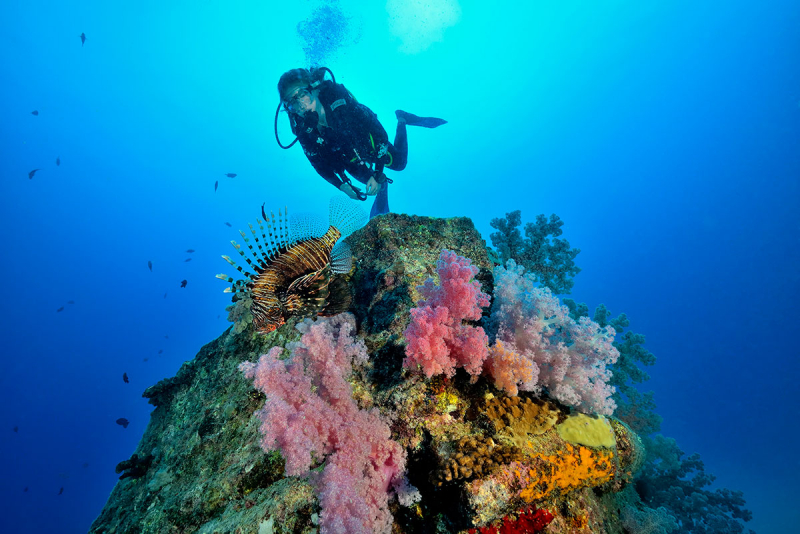
Photo: Mauritius 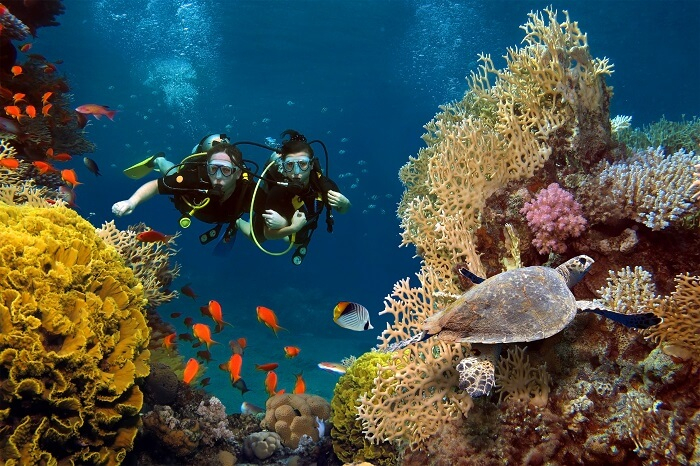
Photo: Travel Triangle -
Rodrigues, one of Mauritius's most remote areas, seems to exist in a different time and space from the rest of the island. The daily pleasures of life and the connection to the land and the residents of this tranquil outpost are the main priorities here. Spend your days diving and snorkeling off the south coast or in the vicinity of La Passe St. François, going on boat excursions to distant islands, getting to know gigantic tortoises, exploring the Port Mathurin Saturday market, or all of the above. Although there is a lot to do on Rodrigues, a large portion of its appeal derives from something much simpler: the pleasure of simply being there.
Sport lovers that enjoy both marine and land activities love Rodrigues. With its hilly topography, which provides a beautiful view from whatever you are and a chance to get back to nature, it is the perfect playground for walkers and trailers. The East Coast offers wonderful treks as well as numerous coves where you may relax and take in the tranquility and unspoiled nature. In a breathtaking environment, you can stroll among these beautiful animals that were brought back to the island after going extinct during the colonial era. On-site attractions include the Garden of the Senses and the caves. Rodrigues is well-known for its southeast kitesurfing locations, where an international competition is conducted each year in late June. Line fishing in conventional boats is a different experience that can be had. You can go on board with one of the island's fishermen and explore the lagoon with them. Local businesses also provide diving lessons, trips to the nearby islands, and fishing excursions both inside and outside the lagoon.
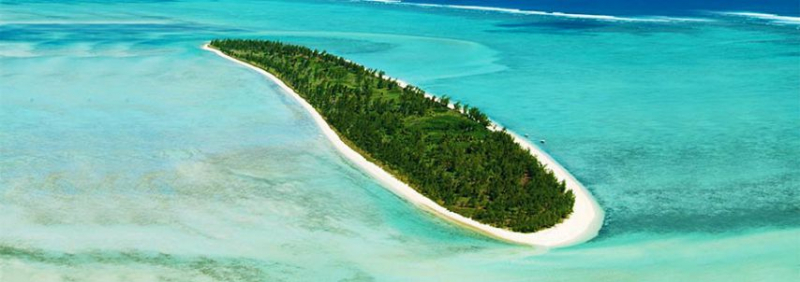
Photo: Mauritius Attractions 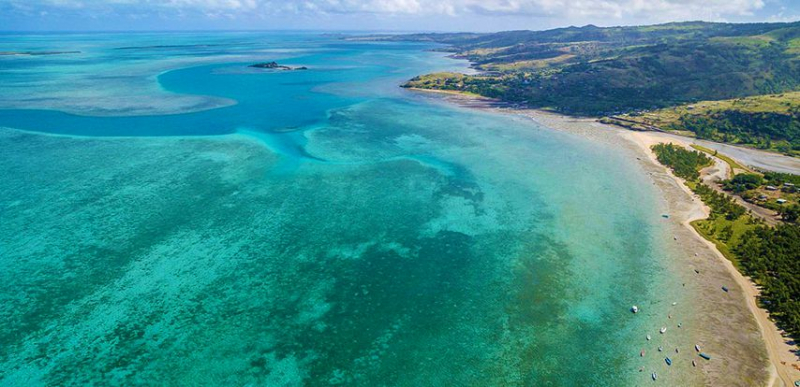
Photo: Mauritius Attractions -
Another thing to do in Mauritius is hiking the Black River Gorges. Black River Gorges National Park is a priceless and protected environment located just thirty minutes from the shore in Mauritius' interior forest. Numerous natural plant and animal species can be found in its deep forest, including three bird species that are in risk of extinction: the Mauritius kestrel, the echo parakeet, and the pink pigeon. Be on the lookout for pink pigeons by the trail or white-tailed tropicbirds flying high above as you stroll through forests and past waterfalls. These stunning routes will lead you through a lush forest filled with mountain peaks, vistas, and waterfalls, some of which are tucked away deep within gorges and others that are simply and quickly accessible. It's unquestionably among the top destinations in South Mauritius!
Since Black River Gorges is so big, the national park has four entrances. The Black River Gorges Visitor's Center and the Petrin Information Centre are located close to two of them. Unless they return to the starting place, the vast majority of hiking routes begin at one of them and proceed to another. You can purchase maps and brochures from the information centers, as well as hire a guide; for the latter, it is best to phone the center in advance. Since there is no public transportation that goes to the national park, you can rent a car, take a transfer there, go on a hiking excursion, or combine a trip to the park with some sightseeing.
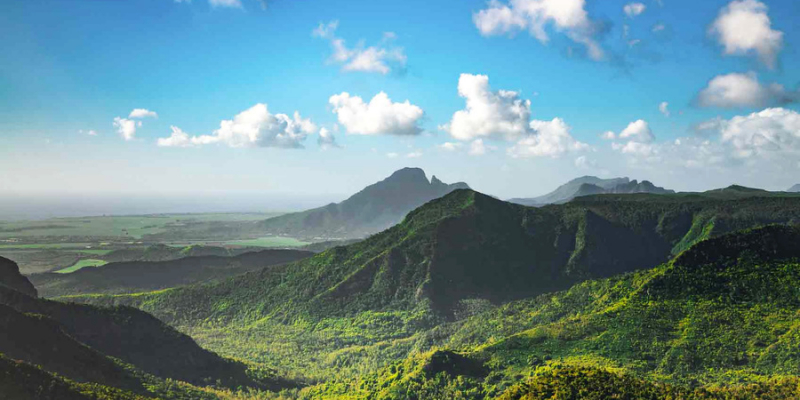
Photo: Visit Today 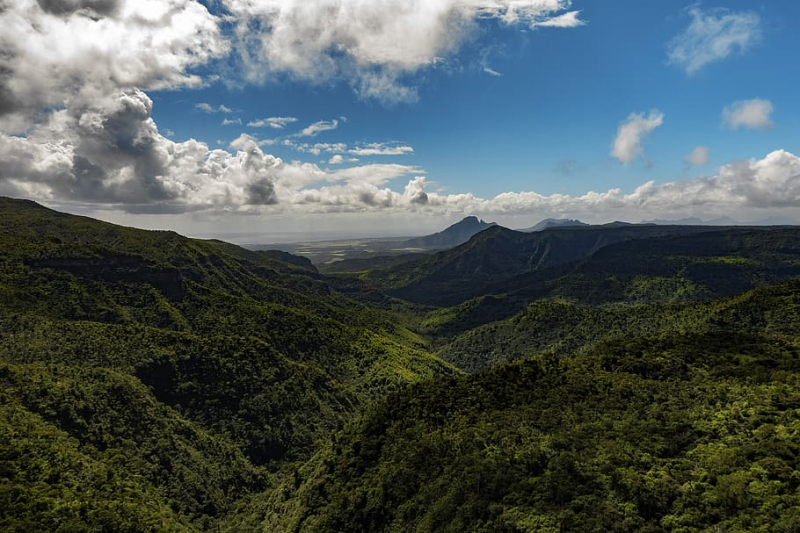
Photo: Go Here Next -
A journey to Chamarel is among the most worthwhile days out in Mauritius among all the excursions inland. Chamarel has a developing culinary reputation thanks to a rising number of casual family-run dining rooms and fine-dining restaurants tucked away among the trees. Chamarel is located high in the hills with wonderful views down towards the shore in certain spots. Other attractions in Mauritius include the eccentric museum of illusions, the famed colored sands of Terres de 7 Couleurs, and the intriguing, environmentally friendly Rhumerie de Chamarel.
The Ebony Forest effort, one of the most interesting conservation projects in Mauritius in recent years, aims to rebuild a tiny area of indigenous native forest similar to that which covered the entire island barely 250 years ago. A third of the forest's 45 hectares will be complete when it is finished. Seven kilometers of hiking trails, two elevated walkways that ascend into the middle of the canopy, safari jeeps, and an information center with a small store are all available. A picturesque vantage point overlooks the waterfall, which plunges more than 95m in a single drop, around halfway (1.5km) between the entrance gate to Terres de 7 Couleurs and the vibrant sands. With a reservation, you can use Vertical World to abseil all the way down into the Chamarel Waterfall's pool. Keep in mind that access to the waterfall requires paying the Terres de 7 Couleurs admission fee.
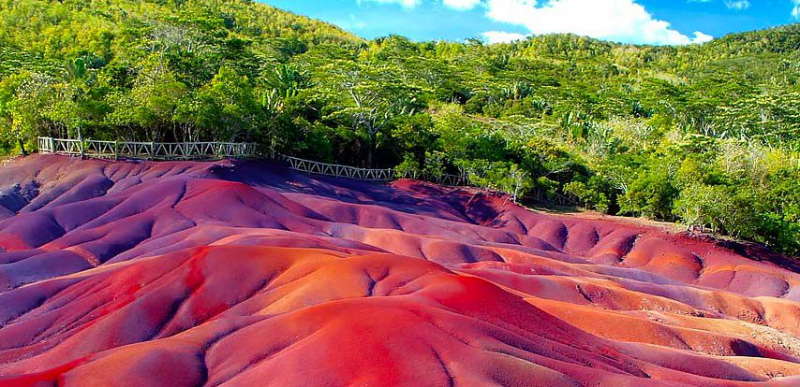
Photo: Mauritius Attractions 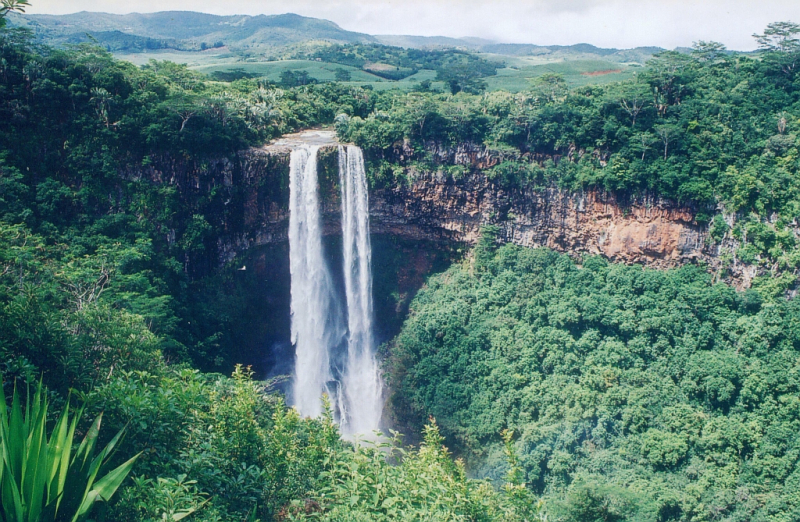
Photo: Flickr -
Explore Île aux Aigrettes would be the next thing to do in Mauritius. Île aux Aigrettes offers a glimpse of the primitive and untamed Mauritius that met early explorers on the edge of the lagoon right off Mauritius' unspoiled southeast coast. The old-growth ebony forest in this area serves as a reminder of how the main island looked before European colonists arrived there in the 16th century. Be careful not to step on a Mauritian giant turtle! The forest was restored as part of a government-backed conservation initiative, and it now protects a variety of endangered birds and other wildlife species.
Just off the shore of Mahebourg is the island of Île aux Aigrettes, and as you board the boat, you can see Mahebourg's charming harbor in all its splendor. From the ocean, the boats, sea creatures, and coast appear incredibly lovely. The island is like an emerald emerging from the water. So that you can see the sunrise, reserve a seat on the boat early. One of the most popular activities in Mauritius is the guided tour, which consists of a hike around the island's paths. The walk, which lasts roughly 1.5 hours, passes through all the key locations on the island where you can see numerous creatures and take in the shade of the native forest, which is home to more than 18 endemic or rare species. Wear appropriate hiking boots, and although a walking stick is not required, consider purchasing one. There is a fantastic nature museum on Ile Aux Aigrettes (Egret Island) that is devoted to Mauritian ecology. Life-size bronze sculptures and paintings representing the different plants and animals that now inhabit and once did inhabit the island can be found here. At the museum, you may discover and understand the rarity of these plants and animals. Spend some time exploring this lovely museum and many more activities.
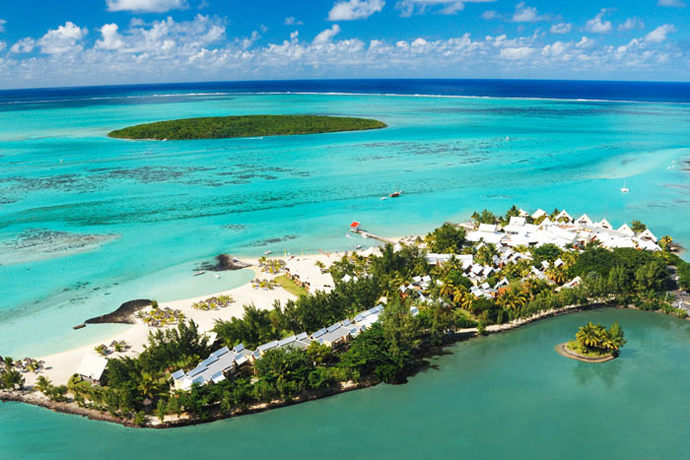
Photo: île Maurice 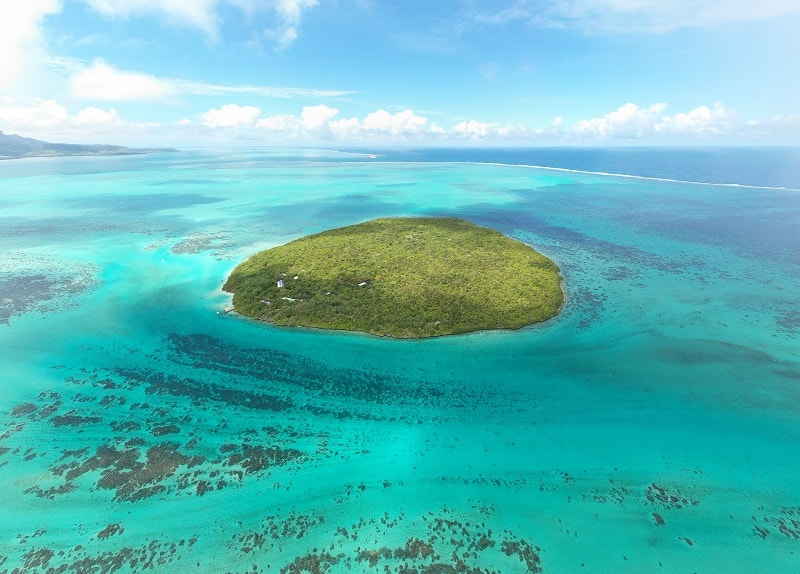
Photo: Mauritius Explored -
The island of Mauritius is ringed by the magnificent beaches that make the country famous. All of the resorts have them, but because there is so much sand all around, you can always find a quiet public beach where you can share the water with local families enjoying picnics rather than throngs of passing visitors. The east coast offers the most options, while southern beaches are more secluded and natural, and the west coast is significantly superior for those seeking water-related activities.
The Northwest has the most tourism infrastructure and fantastic beaches. The best dining and shopping on the island are located here. These beaches are all close to one another and are all easily accessible in a short amount of time. In addition to beaches, here is where most scuba diving stores are located. These shops offer daily snorkeling tours, scuba adventures, and other water sports. The beaches in the southwest have breathtakingly clear water. From Le Morne to Flic en Flac, the coastline is defined by a number of small villages and well-known beach towns. In the vicinity of the Blue Bay lagoon, Southeast is renowned for its world-class snorkeling. It is a fantastic place to stop on your first or last day in Mauritius because of its close proximity to the airport. Although there are a few beaches here, we weren't really impressed with them in comparison to the rest of the island.
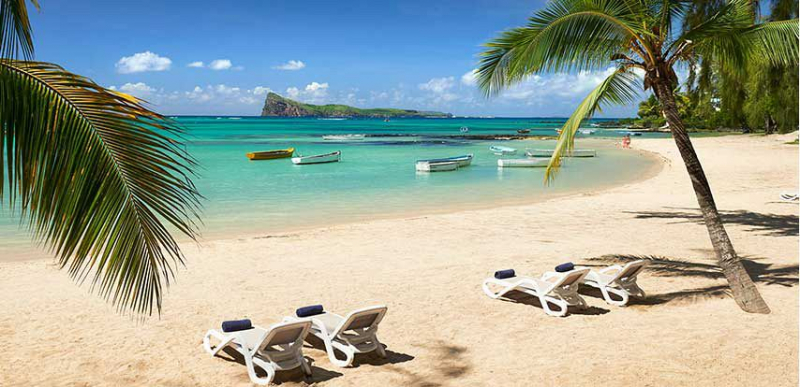
Photo: Mauritius Attractions 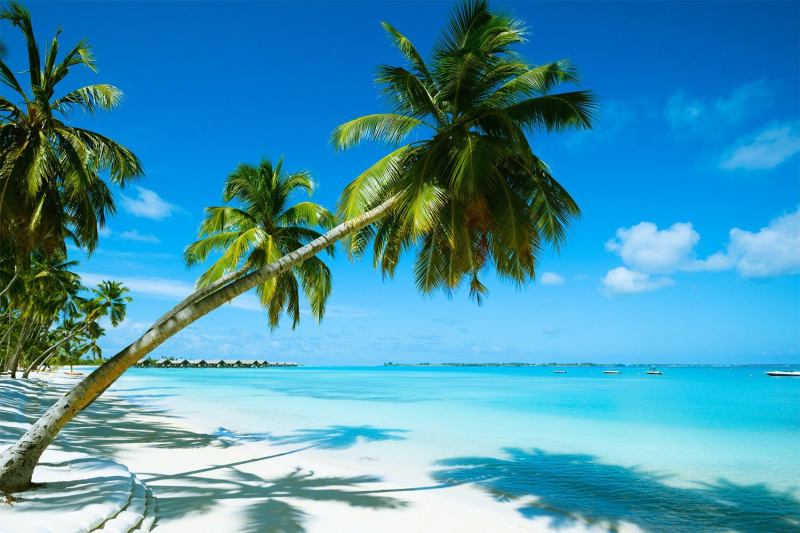
Photo: Delicious -
Try Mauritian Creole cooking is definitely one of the things to do in Mauritius. Mauritius offers a vast selection of food from many cuisines and is frequently referred to as the "melting pot of flavors." In Mauritius, a variety of markets offer international cuisine products. The island was deserted until the Portuguese discovered it on their voyage through the Indian Ocean, thus it is intriguing to know that there is no distinctive Mauritian cuisine. Slaves from South Asia and large portions of Africa, as well as indentured servants, were sent to labor in Mauritius as a result of colonial rulers turning the island nation into a plantation colony. In the end, voluntary migration also happened. Their cuisines also merged into a Creole over the years. It is very clear that you must try their varied cuisine.
Here are some dishes you should try when visiting this country. The substantial Indian influence in Mauritian cuisine has led to curries being a significant part of the cuisine. They differ from the conventional Indian curries, though. Onion, curry leaves, and garlic are the foundation of creole curries. When compared to Indian curries, curries from Mauritius are not as hot and are frequently enjoyed with rice and bread. You should try the octopus curry that is served close to Gris Gris beach. It goes without saying that an island encircled by water has some fantastic seafood to offer. The cuisine of Mauritius is reputed to be seafood-heavy since stews, curries, and other recipes frequently feature seafood as a main ingredient. Must-try seafood dishes include vindaye ourite, vindaye poisson, fried squid, coriander and chili fish, and crab curry. The coastal roads and the beachside vendors are where you can find the freshest seafood in Mauritius. Prepare to devour the fresh catch of the day!

Photo: Restaurants.mu 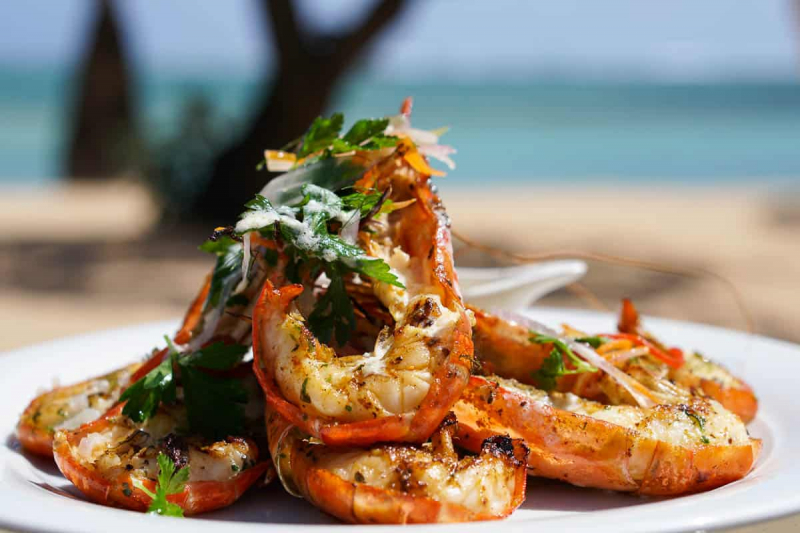
Photo: Food And Drink Destinations -
In Mauritius, there are times when it seems as though the untamed jungle foliage is expanding right before your eyes. The Sir Seewoosagur Ramgoolam Botanical Gardens in Pamplemousses, which were first established in 1735 as the vegetable garden for the nearby Mon Plaisir Château, are the only place where this is more evident. The garden has grown significantly since it first opened. Although the soulful gigantic tortoises and enormous Victoria amazonica water lilies steal the show, you'll need a few hours to fully explore the exotic plant life. You can travel to Mauritius at any time of the year because of its pleasant tropical atmosphere. However, you can organize your trip to fit the variety of activities available to you in Mauritius. The ideal time to visit Mauritius is from May to December. Wintertime temperatures range from 18 to 24 degrees Celsius, which is pretty comfortable. The wildlife is extremely exhilarating, the beaches are spectacular, and the nearby islands shine.
There are at least 85 different varieties of palm trees, a collection to be proud of. They range from bottle palms and royal palms to the magnificent and rare talipot palm, which can only be grown once every 40 years! You must visit the renowned Spice Garden to learn about the plants and see the enormous tortoises that live there. There is a lot to discover here if you enjoy birds. It boasts a variety of bird species, including parrots, ducks, and the Madagascar moorhen, also known as "Poule d'Eau." The pond is home to a variety of aquatic creatures, including fish, eels, turtles, and water lilies. The Pteropus Niger bat, a native to Mauritius, is a common sight hanging from tree limbs.
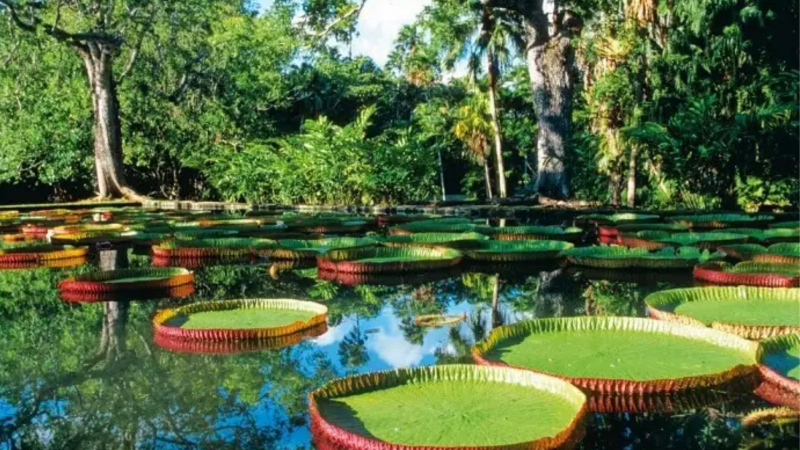
Photo: Travel Triangle 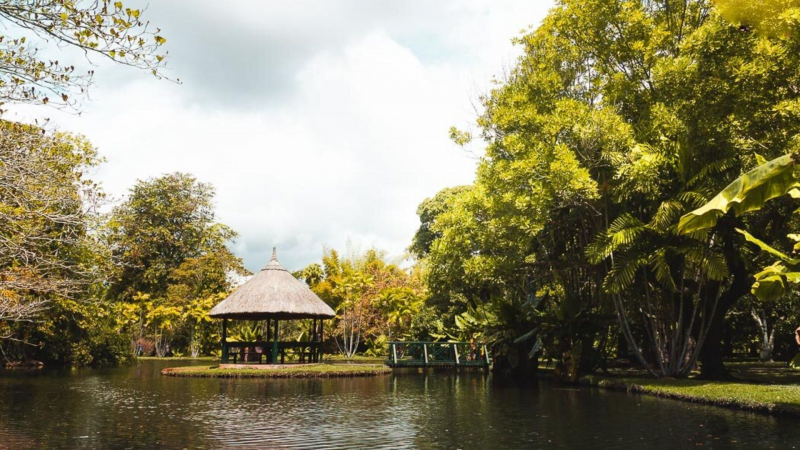
Photo: LaidBack Trip -
Before becoming independent in 1968, Mauritius was uninhabited until the Dutch acquired control of the islands in 1598. Prior to that, it was a colony of the Dutch, French, and British at various points. Huge sugar and tea estates, which are now some of the Indian Ocean's greatest architectural treasures, once covered all open space in the Mauritian interior while it was under European administration. French-style colonial palaces kept watch over these precious crops. These magnificent homes have beautiful gardens, high ceilings, elaborate verandas, and cantilevered windows to capture the breeze, like miniature chateaux adapted to the tropics. For stunning examples of the design, visit the Château Labourdonnais close to Pamplemousses or the Eureka Mansion in Moka.
Today a museum, Eureka House, also gives visitors a chance to see the island's lush interior, with wide grounds and formal gardens built to take the place of the island's original sugar cane fields. It also has its own restaurant and separate lodging. A network of paths for walking wind through native vegetation, through riverbanks, and past hidden bridges and little waterfalls. Watch out for unique species like the giant agathis robusta tree, one of the best in Mauritius, as well as mango trees, several kinds of palm trees, and other exotic plants. The 1859 completion of the renovated Château Labourdonnais makes it one of the island's most charming examples of colonial architecture. The perfectly proportioned chateau, constructed of teak in an Italian neoclassical style, is furnished with modest Victorian furnishings and a few incredibly charming design details. Guided tours are required and last 45 minutes. At 10.30 am and 2 pm, the Labourdonnais Express offers a 45-minute tour of the gardens and orchards (adult Rs 250, child Rs 175). That's all about the ninth thing to do in Mauritius we want to mention.
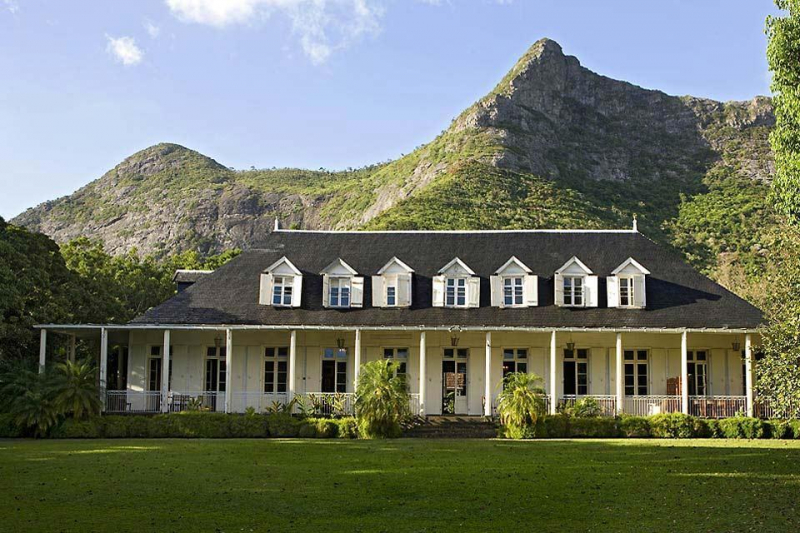
Photo: Easyvoyage 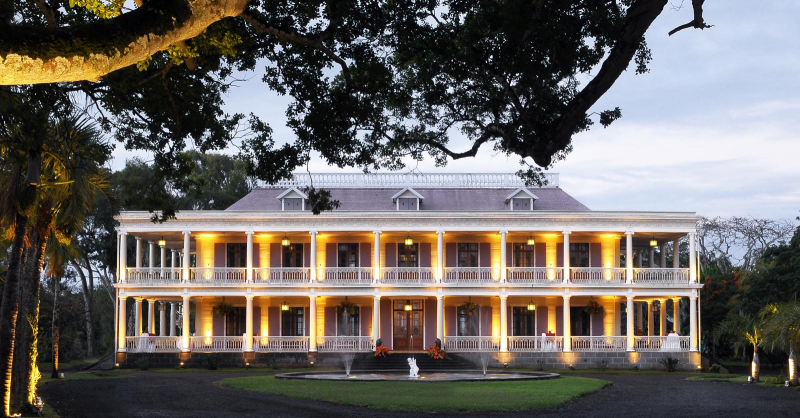
Photo: iViSiT+ Mauritius -
A Unesco World Heritage site, Le Morne Brabant is the magnificent hill that rises suddenly from Mauritius' southwest coast. It served as a residence for a group of people known as the Maroons, who fled slavery and sought safety on this hitherto uninhabited peninsula. According to folklore, the officers were sent to the Maroons' camp to inform them that slavery had been abolished, but when the Maroons learned that they were being approached by a number of officers, they jumped to their deaths rather than be captured once more. Views of most of Mauritius are available from the difficult but exhilarating climb to this tragic mountain, which also features a sobering monument honoring the dead.
The genuine summit is inaccessible by other means since the Le Morne Heritage Trust has prohibited access to it as a natural reserve. The minor summit's route is quite clear and well-traveled. The hike is not too strenuous, although there are a few steep spots where using your hands is advised. It is advised to start early because it is highly exposed to the sun. If rain is expected, it would not be advisable to travel on a few of the steep, rocky areas. A huge cross that faces the ocean may be seen as you climb over the final rock. It serves as a tribute to those who perished on this magnificent mountain and marks the highest point that is easily accessible. On the summit, there isn't much space, so you do need to be careful. It is tough to know where to start looking from here. You can see the breathtaking Le Morne lagoon, which features a patchwork of coral reefs, as well as the peninsula's shimmering white sandy beaches and the well-known optical illusion known as the underwater waterfall.
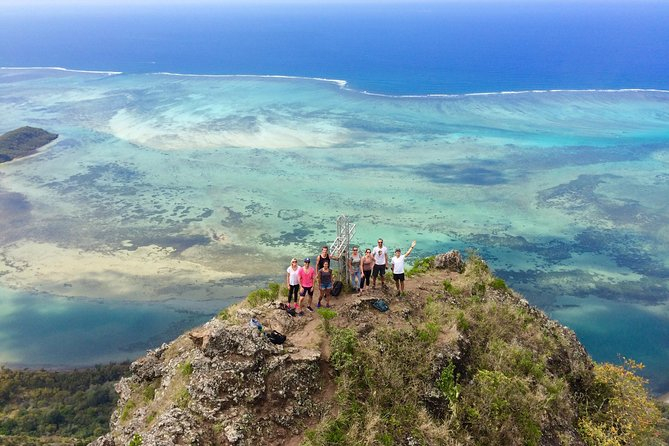
Photo: Viator 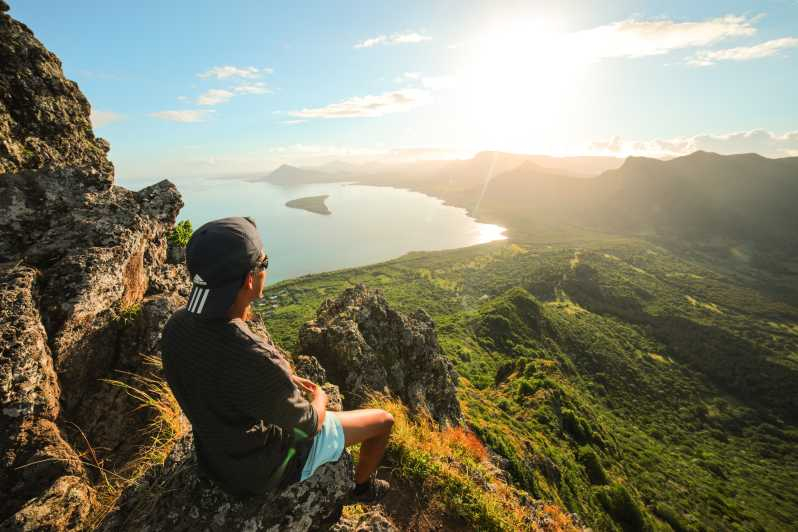
Photo: GetYourGuide












